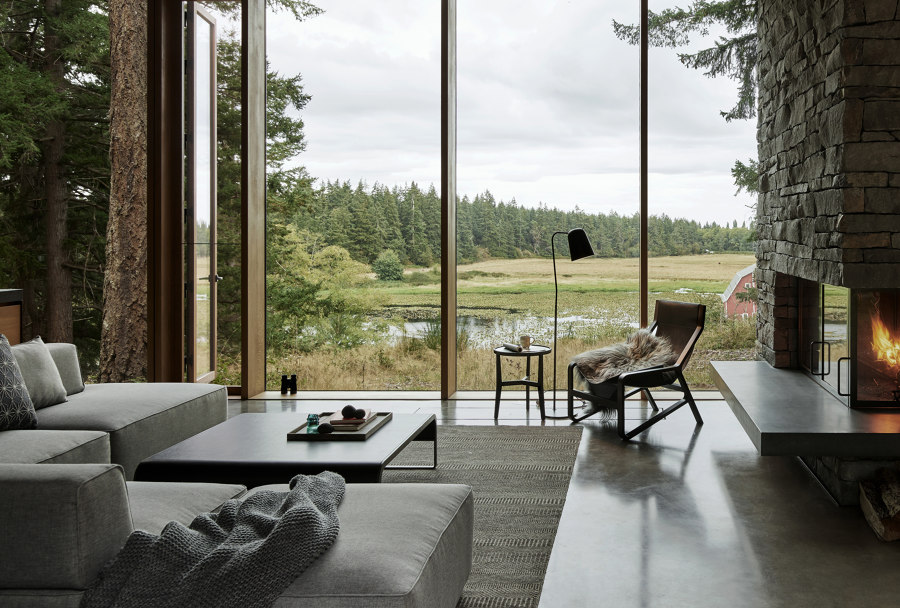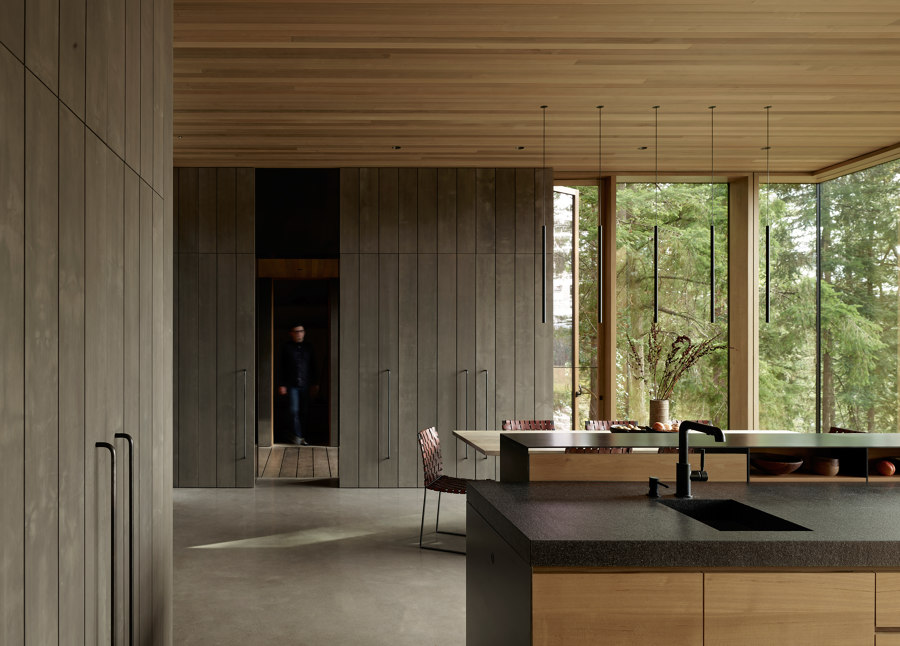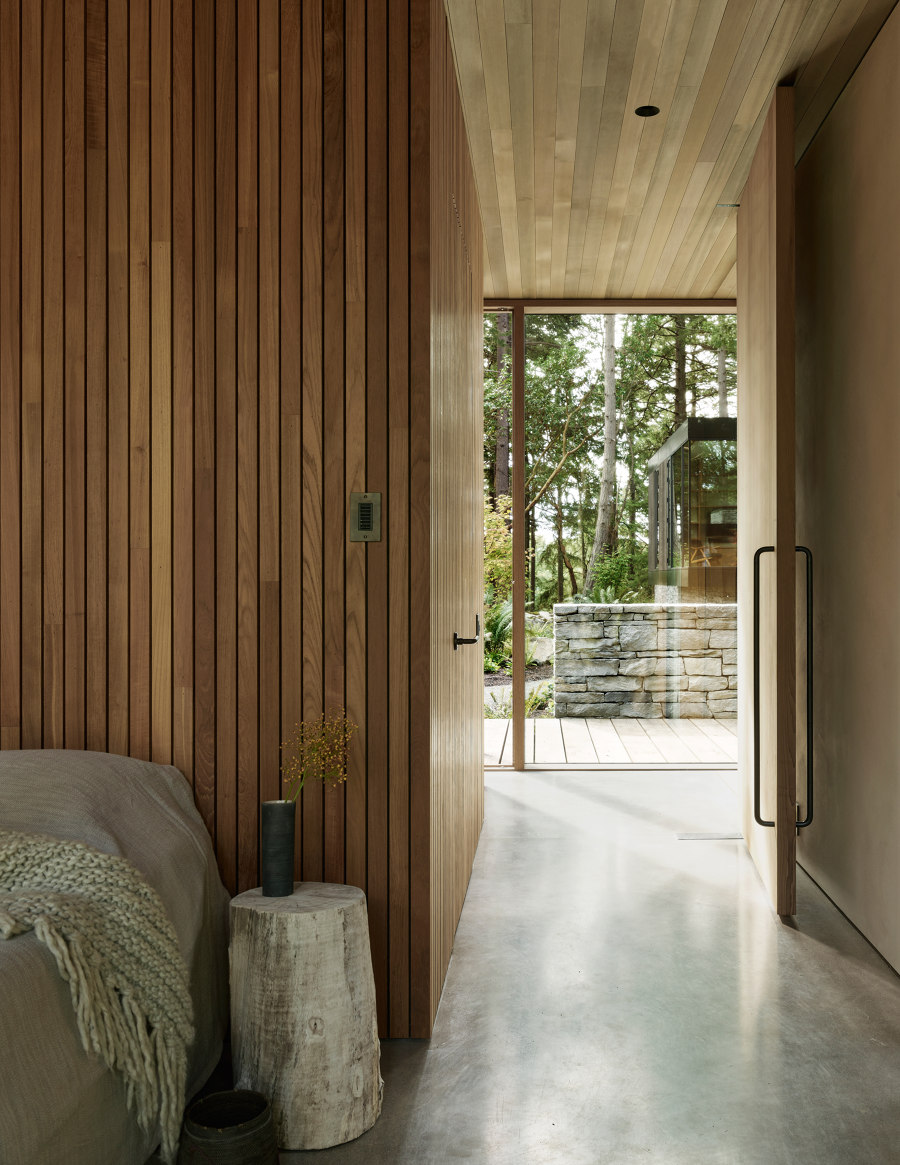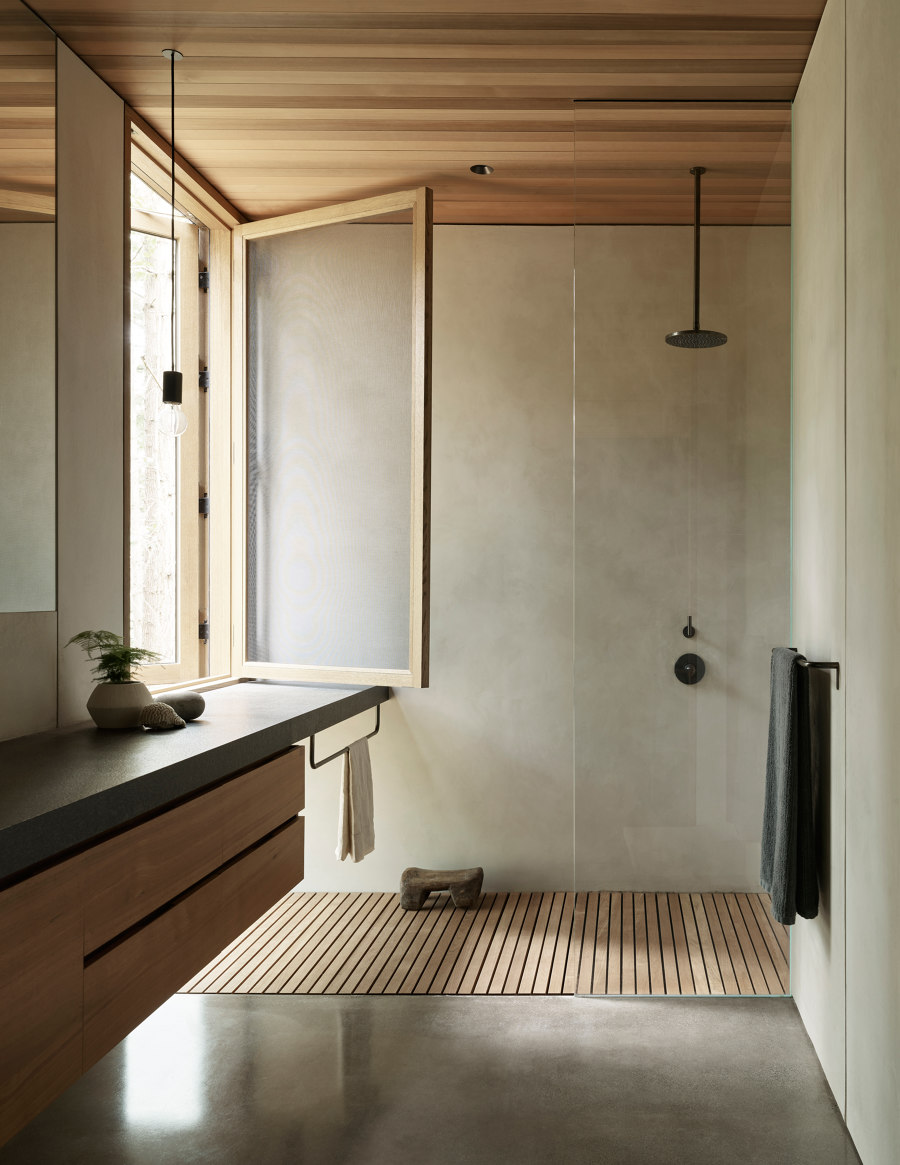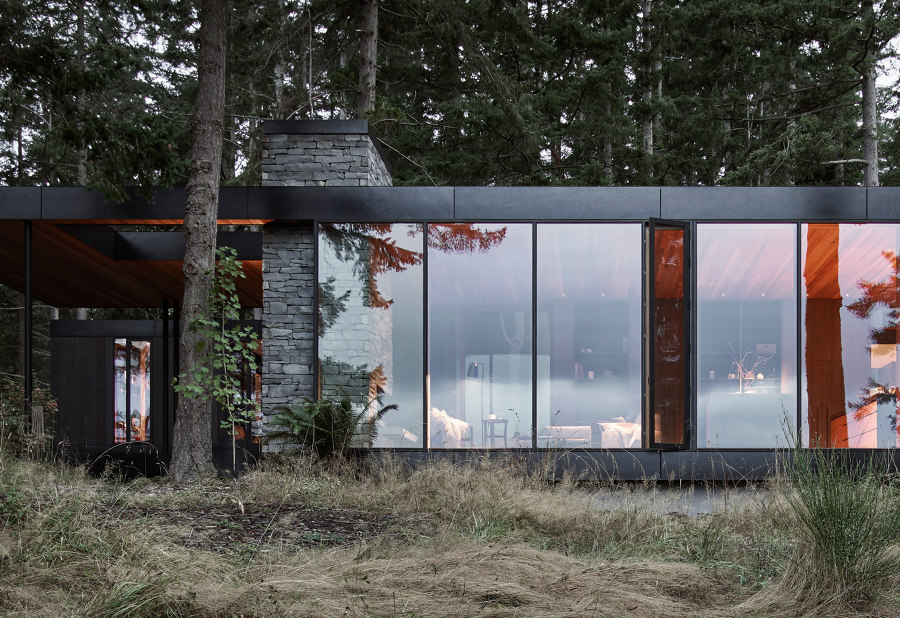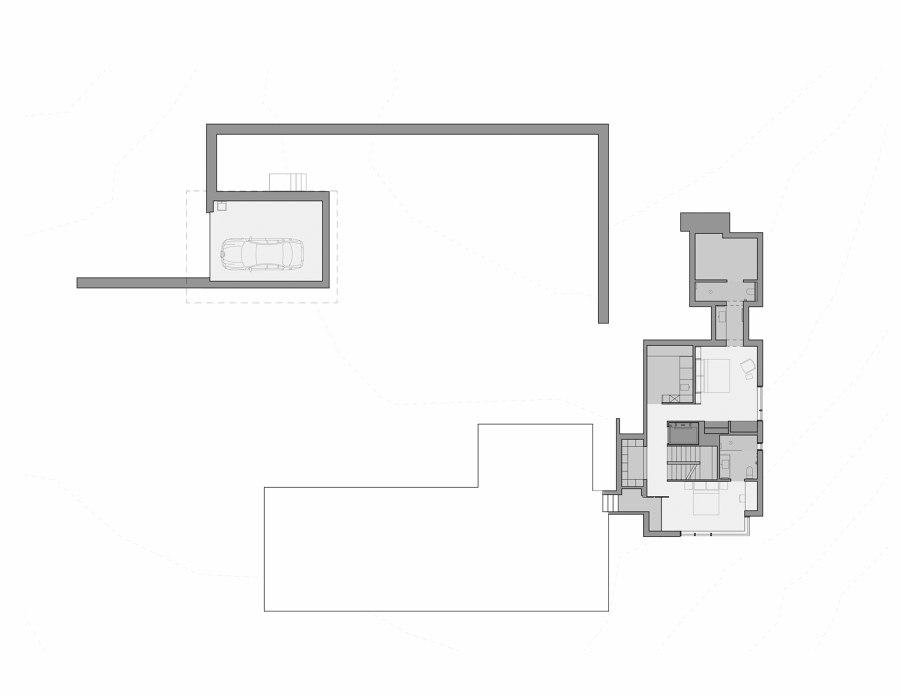“Located on a rural site on Whidbey Island, a local family sought a new home and retreat on the site of their existing family farm. Out of respect for turn-of-the-century agricultural buildings located on the site, the home tucks into the edge of a densely forested hillside, overlooking chicken sheds, a weathered red barn, cattle fields and a fishing pond. The house appears intentionally modest and humble from the valley, deferential to the pastoral farmlands below.” - Eric Walter, AIA, Principal
“With a palette of naturally weathered woods, concrete, locally quarried stone walls, deep oak window jambs, soft plaster walls, and black steel accents, the house strives to be warm and rustic yet simple, clean, and open - a house that honors both the timelessness of the forest and agricultural heritage of the site.” - Steve Mongillo, AIA, Principal
Owner narrative
“The house was designed as both retreat and part-time residence for a multi-generational growing family with strong local roots going back several generations on the island. Client meetings typically included the owners, their three adult children, and sometimes their teenage kids as well. Intended for summer BBQs, fishing retreats, and family gatherings, the house was designed to be flexible and durable, and reflect the layered history both of the site and of the family itself. While designed to be comfortable for two, the house accommodates up to 20 people, with a four-bedroom main house and a compact bunkhouse for the many grandchildren and guests.” - Eric Walter, AIA, Principal
“Several of the interior doors and wall art are carved solid cedar slabs crafted decades ago by the family patriarch as a young doctor filling his time between patients, instilling a meaningful connection between the family’s past and present. The new solid plank cedar master bedroom door is designed as a future carving project for the owner, in between his days working the land, clearing brush, and raising organic cattle in the meadow below.” - Steve Mongillo, AIA, Principal
“To the team’s surprise, when the home was completed the owner had a custom bronze plaque made to display in the house. It listed the name of every person that significantly contributed to the house design and construction, including many incredible carpenters and craftspeople. He felt intense appreciation for the people that made the house what it is. We wholehearted agree.” - Steve Mongillo, AIA, Principal
Contextual Information
The Whidbey Farm house tucks into the edge of a dense forest of large Douglas Fir, Hemlock and Madrona trees, overlooking a turn of the century family farm. The view of the house is intentionally discreet and modest from the agricultural areas and nearby road, with the intent that someone may not even notice it. The house captures views overlooking weathering barns, a fishing pond and organic cattle fields, but still feels deferential to the landscape and the agricultural history of the site. Within the forest, the house massing is designed to slip between tall Firs and wrap around a modest clearing within the dense forest. Each building wing was carefully situated to preserve as many significant trees as possible. At the owner’s request, intense care and effort during design and construction placed the protection of the trees over construction expediency.
Social and Cultural Impact
“Clearly growing out of the small farm house, the families wanted to expand with a new home that could comfortably hold the entire group, but do so with great respect for the historical nature of the farm and existing ecosystem.” - Eric Walter, AIA, Principal
“The project is designed to build memories and bonds for a large extended family for generations to come in a world where too many families are separating rather than coming together. The senior owners set the project up so that regardless of what happens to them, the kids and their kids would always have the house to bring them together and continue building memories.” - Steve Mongillo, AIA, Principal
Economic Performance
The Whidbey Farm is designed for longevity and low-maintenance, reducing the life cycle cost of the house for the owners. Nearly all of the exterior materials are designed to be super low maintenance with materials that don’t require an applied finish, or materials they are meant to remain durable for decades to come. Perhaps most important of all, the design is meant to timelessly inspire and delight, keeping the building further away from wasteful remodels and the wrecking ball.
Innovative Design and/or Construction Feature
The program of the home is broken down into discrete, modestly sized volumes, carefully woven between an array of large Douglas Fir trees, wrapped around a courtyard of natural and native shrubs and ferns. A low wall of stacked local Basalt stone organizes the volumes and subtly defines the perimeter of the courtyard. The courtyard becomes the visual and physical link between the different volumes, providing access and connection, but offering separation and retreat when desired. The rustic gravel approach to the house meanders through the dense and dark evergreens, opening to the house and layered views of the courtyard and trees.
Stones site walls were designed to slip directly adjacent to and between the Fir trees, looking as the trees grew around the walls over time. Specially engineered foundations for the stone walls used a mix of traditional stem wall, pin piles and shallow in wall beams to span over and dodge critical roots as needed. What little treefall required was carefully stored on the site, and is being used as lumber for the farm, cattle fencing and seasonal firewood for the fireplace and the new fire pit at the edge of the meadow.
Design Team:
mw|works architecture












